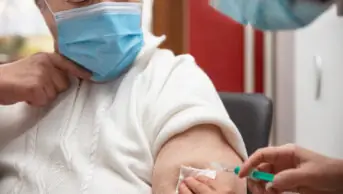
Shutterstock.com
Community pharmacies should be able to access a total of 10.5 million lateral flow tests (LFTs) every week for the rest of January 2022, say negotiators.
In an update on its website on 5 January 2022, the Pharmaceutical Services Negotiating Committee (PSNC) said that wholesaler Alliance Healthcare would receive 2.5 million more LFTs for distribution to community pharmacies in England next week.
The increase comes after calls from pharmacy representatives for supplies of LFTs to remain consistent as public demand continues to surge.
The PSNC’s update also said that demand for LFTs “via the Pharmacy Collect service continues”.
“By the end of this week (8 January 2022), the UK Health Security Agency (UKHSA) will have distributed over 8 million tests to Alliance Healthcare,” the statement said, adding that “Alliance Healthcare are delivering 86% of their orders within 24 hours of the pharmacy order, with almost half of that on the same day”.
“For the remainder of January [2022] the UKHSA is planning to distribute 10.5 million tests per week … via Alliance Healthcare, replenishing Alliance Healthcare depots as test kits are distributed to pharmacies.”
The ‘COVID-19 lateral flow device distribution service’ — also known as ‘Pharmacy Collect’ — launched on 29 March 2021 as an advanced service with LFTs initially distributed by three companies: Phoenix Healthcare Distribution, Sigma Pharmaceuticals and Alliance Healthcare.
Alliance Healthcare is now the sole distributor of LFTs to community pharmacies. However, people are also able to order test kits through the government website, which are then delivered by Royal Mail.
However, the PSNC update added that the UKHSA is finalising “a plan to switch on a Parcel Force delivery contingency”, which will “support the supply of a further 3.5 million test kits”.
In December 2021, community pharmacies began experiencing “unprecedented demand” for the tests after the government announced that fully vaccinated contacts of people with a positive COVID-19 test were required to take a LFT each day for seven days, in lieu of self-isolating.
Commenting on the demand for tests, Zoe Long, director of communications and public affairs at PSNC, said community pharmacies “are continuing to face near-constant demand for lateral flow tests, which they are still often unable to meet”.
“The UKHSA is doing all that they can to assure supplies, but so far, and with further policy changes emphasising the importance of lateral flow tests announced today, this will not have felt like enough to many pharmacy teams,” she added.
“We do hope that these further steps to increase supply will start to have a positive impact soon, but in the meantime, we will continue to raise concerns with the UKHSA on an ongoing basis.”
Leyla Hannbeck, chief executive of the Association of Independent Multiple Pharmacies, welcomed the increased allocation and said that the average pharmacy was only receiving 100 LFTs a week in December 2021.
She added: “We are pleased to see that our voice has been heard. Pharmacies are best placed to distribute the kits to members of the public owing to the accessibility they offer. We will continue monitoring the situation and liaise with UKHSA accordingly.”
On 5 January 2022, the UKHSA announced that people who receive a positive result after taking a LFT, but are asymptomatic, will not be required to take a PCR test to confirm that they have COVID-19 from 11 January 2022.
The government said in a press release that this is “a temporary measure while COVID-19 rates remain high across the UK” and that anyone who develops symptoms should take a PCR test.
The Pharmaceutical Journal has approached UKHSA for comment on its plans to increase LFT supplies.
Read more: How reliable are lateral flow tests?


